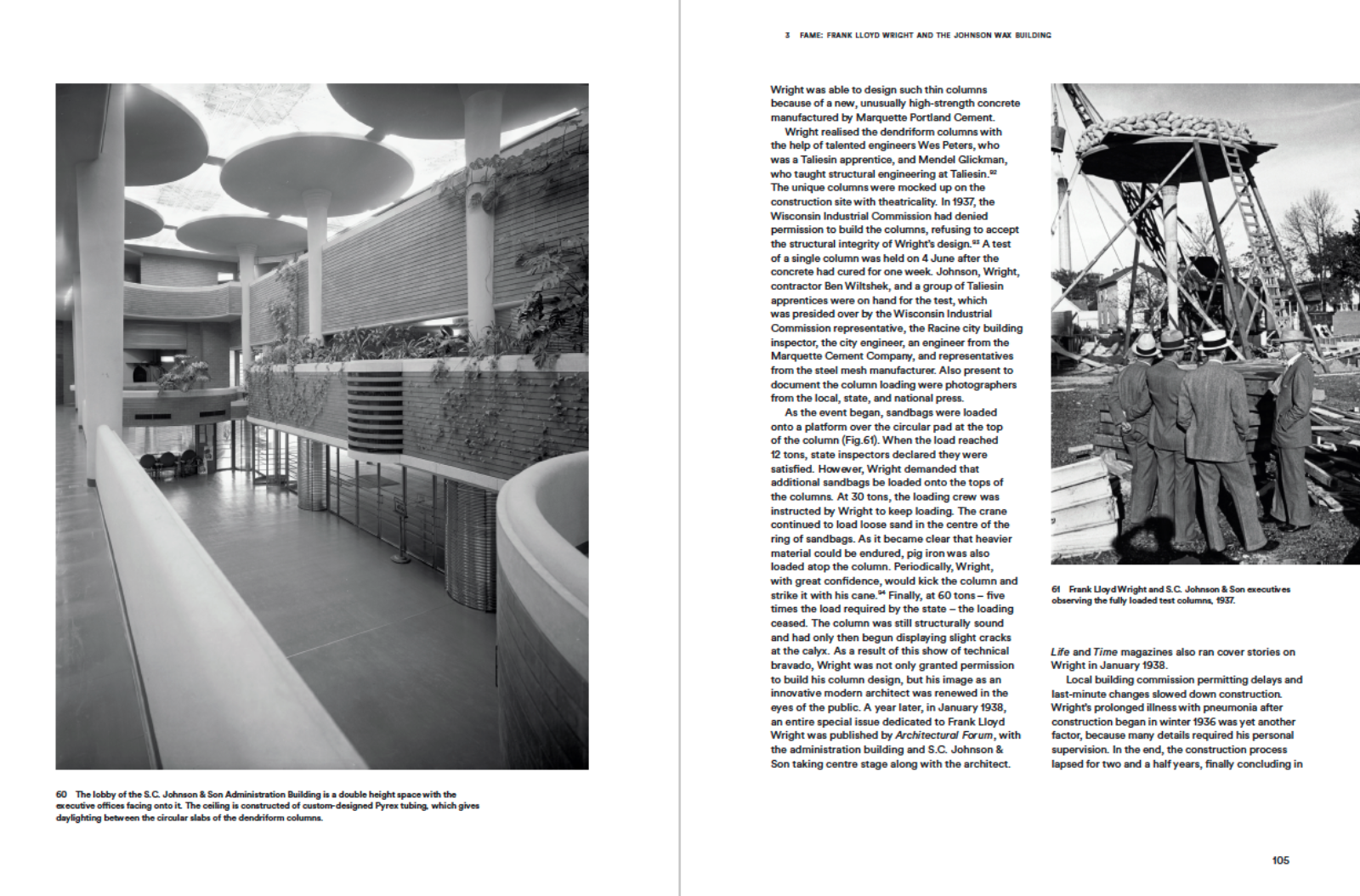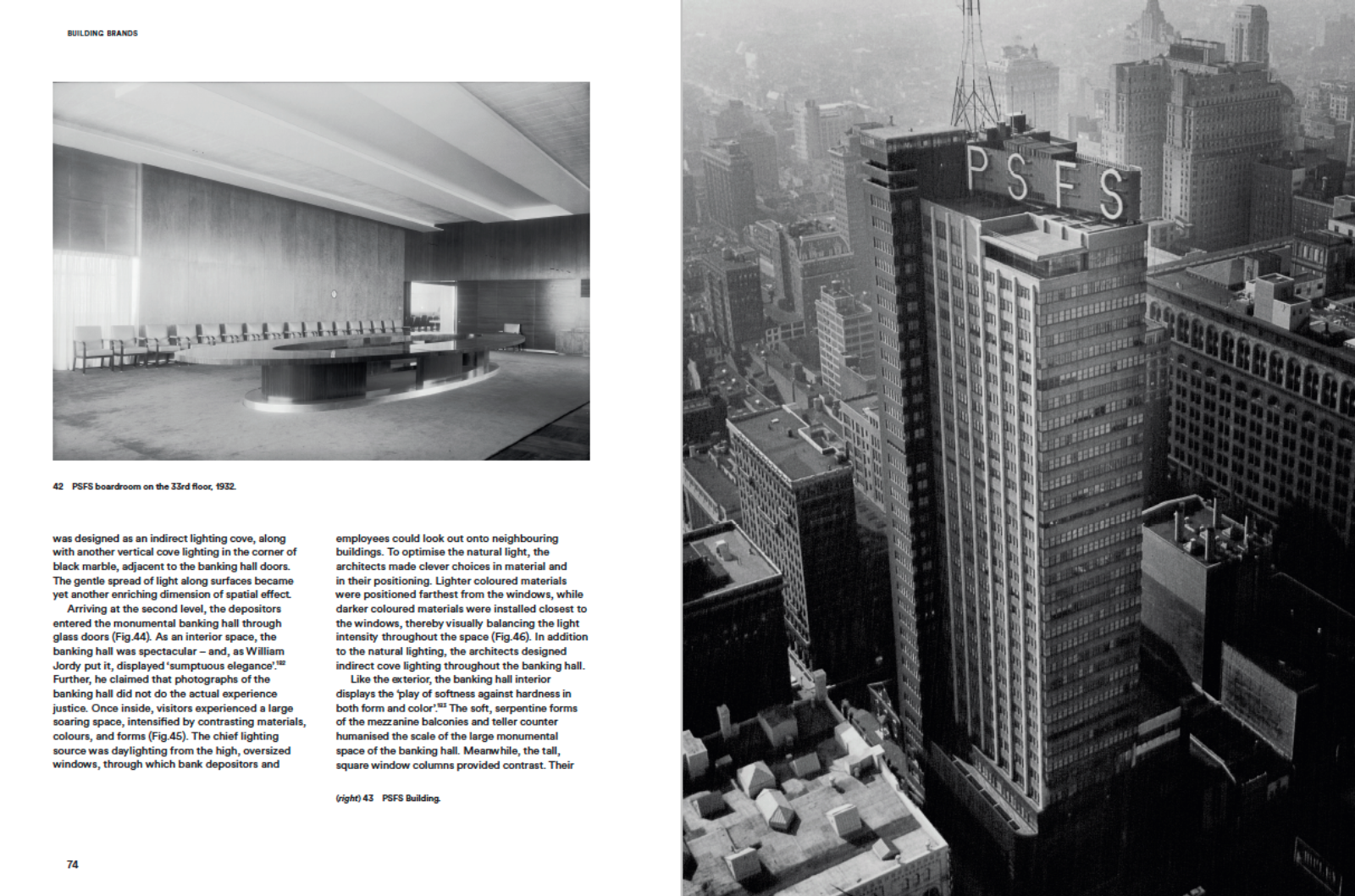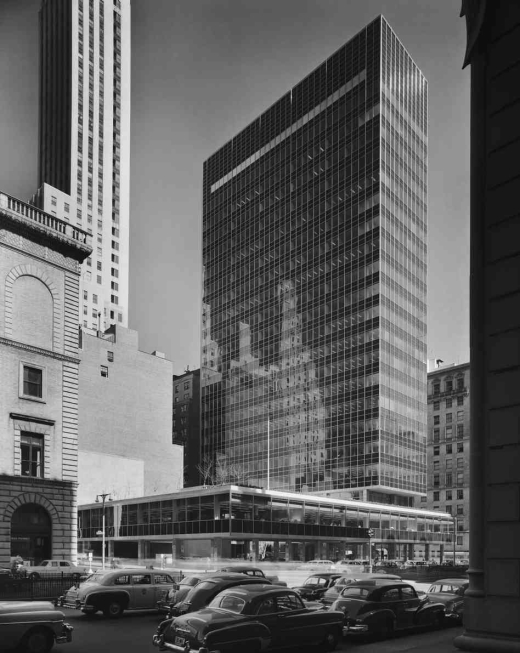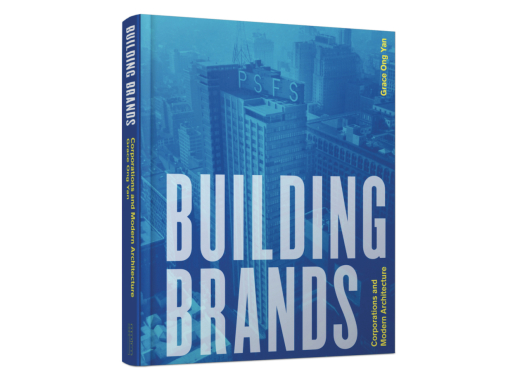Building Brands explores the role of architectural branding in the design of corporate modernism and tells how business strategies, modern architecture, urban conditions, and conceptions of society shaped the ambitious branding goals of corporate clients.
Between the Stock Market Crash and the Vietnam War, American corporations were responsible for the construction of thousands of headquarters across the United States. Over this time, the design of corporate headquarters evolved from Beaux-Arts façades to bold Modernist expressions. Building Brands by Grace Ong Yan examines how clients and architects together crafted buildings to reflect their company’s brand, carefully considering consumers’ perception and their emotions towards the architecture and the messages they communicated.
Building Brands: Corporations and Modern Architecture
Author
Grace Ong Yan
Affiliation
Assistant Professor, Thomas Jefferson University
Tags
By focusing on four American corporate headquarters: the PSFS Building by George Howe and William Lescaze, the Johnson Wax Administration Building by Frank Lloyd Wright, Lever House by Skidmore, Owings & Merrill and the Röhm & Haas Building by Pietro Belluschi, the book shows how design devices of sign, fame, form and material brought company messages to the public. Drawing on original material from corporations’ archives, Building Brands brings new insights to corporate modernism by examining how company leaders, together with their architects, conceived of their headquarters not only as the consolidation of employee workplaces, but as architectural mediums to communicate their identities and brands.

Building Brands examines the evolution of corporate modernism through a new lens – that of the development of architectural branding. This scholarship shows that architectural branding existed at a far earlier moment than previously thought and tells the stories of how these buildings, architects, and clients realized and developed it.
These case studies constitute formative models for an architecture and an urbanism that are still with us today. The evolutionary arc of these case studies is still in many ways unfolding. If they provide a history of how corporate clients were involved in modern architecture, they also suggest how corporations still communicate and ultimately expand their brands with specific architectural devices: sign, architect, form, and material.

About the Author
Grace Ong Yan is an architectural historian, educator, and designer whose scholarship explores alternate theories of modernism, intersections of media and the built environment, and interdisciplinary collaborations. Currently she is Assistant Professor at Thomas Jefferson University in East Falls. In addition to Building Brands, she is the co-editor of Architect: The Pritzker Prize Laureates in their own Words, 1st and 2nd editions. As an architect and interior designer, Grace practiced architecture and interior design at Gensler's 585 Branding Studio, Renzo Piano Building Workshop, and Pei Cobb Freed and Partners. She holds a Ph.D. from the University of Pennsylvania, M.Arch. from Yale University, and B.Arch. from the University of Texas at Austin. Her independent design work has been recognized with awards from the Storefront Gallery for Art & Architecture in New York and by the Osaka International Design Competition.
Her scholarship has been published in Companion to the History of Architecture, Volume IV, Twentieth-Century Architecture (Wiley Blackwell), and the journal Design and Culture, The Journal of the Design Studies Forum (Berg). She has presented her scholarship at American Institute of Architecture, College Art Association, Association of Collegiate Schools of Architecture, Interior Design Educators Council, Architecture Research Centers Consortium, and serves on the College Art Association Design Committee. Ong Yan is a current member of the board of directors, and the past chapter president of Docomomo US/Greater Philadelphia.



